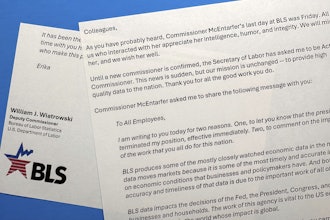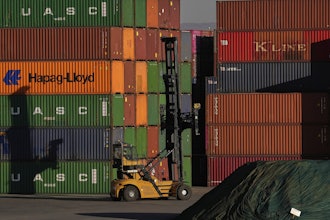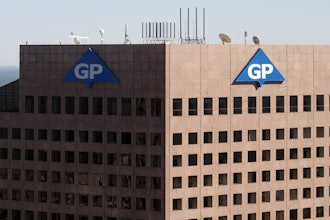In the aftermath of PACK EXPO Las Vegas, Food Manufacturing had the opportunity to correspond with Videojet Regional Product Manager David Freed about topics and trends related to coding and labeling.
What are the latest trends in coding?
Ever greater production demands mean coding equipment has to keep up. Outdated coding technology often can’t achieve high quality codes on ultra-fast packaging lines, so manufacturers are looking for smart, digital solutions to improve code quality and address code complexity for supply chain traceability.
Manufacturers are also choosing codes that don’t detract from the product’s design. For instance, we’ve noticed a shift to more water bottles being marked with lasers as some manufacturers prefer their “clean” look. As consumer demand for new products leads to innovations in packaging substrates and shapes, coding equipment is constantly evolving to address these changes.
We are responding to trends toward more compact marking equipment to easily fit into packaging lines and other equipment. Some manufacturers are looking for multiple printhead and ink options to provide the flexibility to print on the bottom of a package or inside a lid, for instance, or to mark on two production lines at the same time.
We have also seen growth in the demand to print smaller alphanumeric text as packages get smaller and as codes grow in content. High resolution printing and marking equipment can deliver both human and machine-readable codes where space is limited.
What are the latest trends in labeling?
Manufacturers are experiencing higher production demands due to fewer facilities and the consolidation of existing production plants. With demanding production schedules, these manufacturers need to increase throughput by putting more product out the door each hour with high speed equipment. Labeling systems must allow for quick ribbon and label changes and require little maintenance. For labeling cases, skids or shrink wrap, Videojet developed the 9550 Print & Apply Labeler with Direct Apply™ (pictured at left) to apply the label without the need for a tamp or blow box applicator. The 9550 can achieve throughput up to 150 packs per minute for typical 4” x 6” labels. Its Intelligent Motion™ technology provides automatic label and web tension detection and control to help reduce setup time and labor. Users can achieve label and ribbon changes in a little as than 60 seconds and a single, intuitive touchscreen interface stores label jobs on-board and allows for quick status checks and job selection.
With rising recalls and allergen worries, how can coding help with increased tracking and traceability?
For manufacturers in the food industry, traceability is quickly becoming a highly visible issue as companies strive to meet regulatory requirements and minimize brand damage by narrowing the scope of any recall. Since a traceability solution requires the application of a unique code to individual packages in the production environment, some food manufacturers are finding that their analog and older coding systems can’t keep up. For instance, complex codes with multi-line requirements, such as those necessitated by the Food Safety Modernization Act (FSMA), may exceed the capability or cause a decrease in the speed of the printing and marking equipment used by some manufacturers.
While it is sometimes possible to augment existing print technology to meet new code requirements, it is often more advantageous to upgrade existing coding equipment with newer, higher speed solutions that may carry other benefits such as increased uptime and ease-of-use. For example, many thermal transfer overprinters (TTO) have the capability to print large amounts of high-resolution text, including relevant allergen information. Other advanced coding technologies, such as continuous inkjet (CIJ) and laser marking, can also be used for on-pack printing and marking of ingredients and allergens with variable data while allowing for real-time changes.
What is new from Videojet in 2015 and what was Videojet showing at Pack Expo Las Vegas?
This year, Videojet launched its Remote Service solution. Available on Videojet 1000 Line printers, this innovation provides real-time notification to designated users regarding printer needs as well as potential system issues. Available with exclusive remote access technology, users and Videojet technical support personnel can see into and evaluate printer performance from virtually anywhere for quick and simplified troubleshooting. This unprecedented access to printer operation data, coupled with remote access capabilities, increases collaboration and speeds printer adjustments, helping to keep printers online and production moving.
Videojet launched two new technologies at this year’s Pack Expo and Pharma Expo:
- The new Videojet 1560 and 1660 CIJ printers engineered to help increase uptime, reduce cost of ownership and enhance profitability in high-use applications. Long Life Core™ technology offers five years of operation between planned wear parts replacement, delivering maintenance predictability and lower cost of ownership.
- The new Wolke® m600 oem TIJ printer designed to deliver breakthrough integration versatility combined with the industry’s most powerful data handling and global track and trace capabilities. It offers secure ultra-fast processing of up to 20 unique records per second, including 2D DataMatrix codes.























